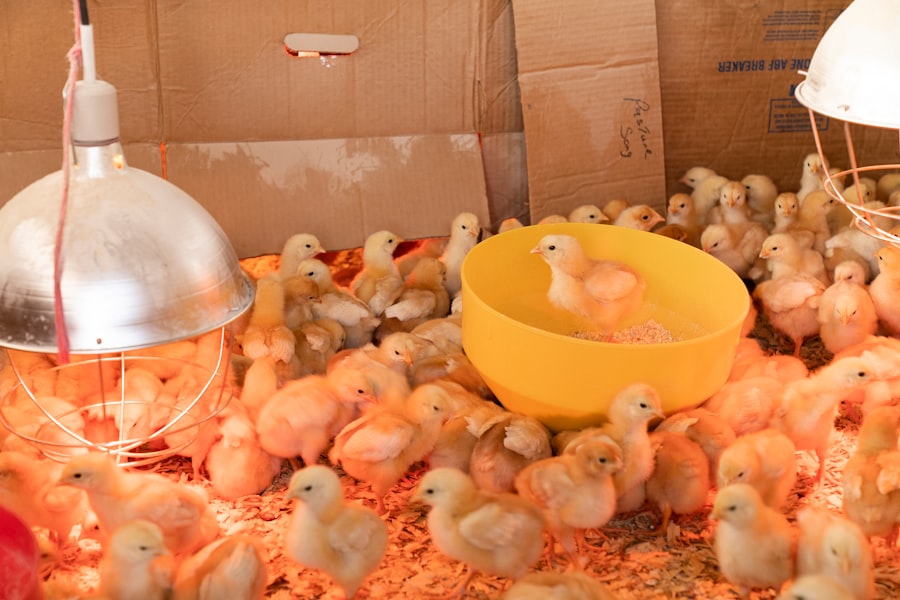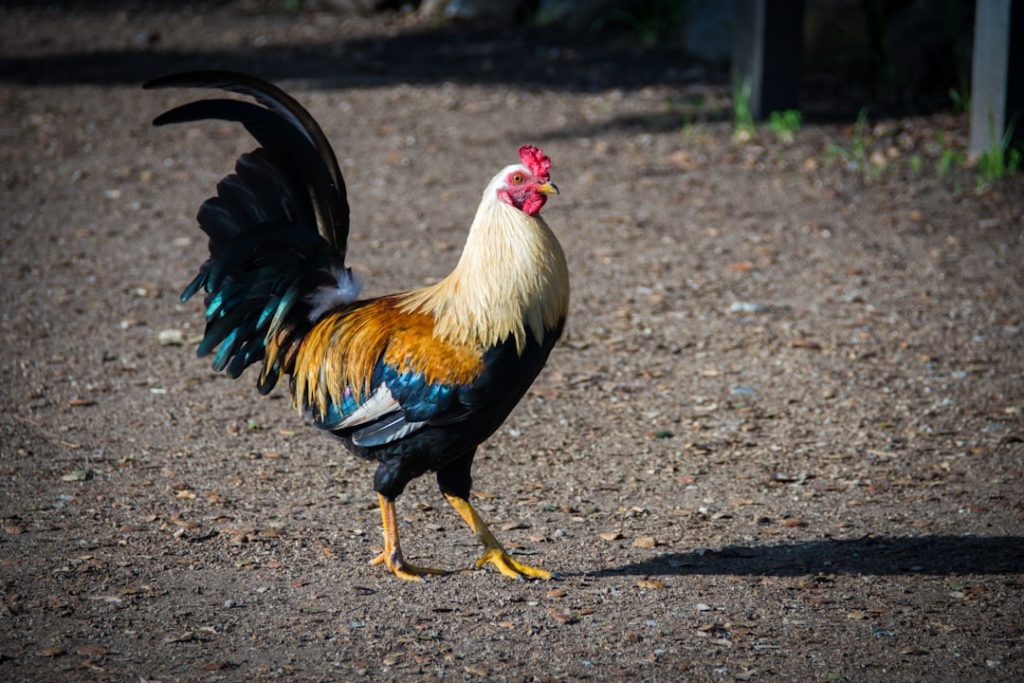Keeping chickens can be a fun and rewarding experience for kids. Not only do they get to interact with these fascinating creatures, but they also learn important life skills such as responsibility and caretaking. In addition, keeping chickens provides families with a source of fresh eggs, which can be a healthier and more sustainable option compared to store-bought eggs.
One of the main benefits of keeping chickens is that it teaches kids responsibility. Taking care of animals requires commitment and consistency, as chickens need to be fed, watered, and their coop cleaned regularly. By assigning these tasks to children, they learn the importance of being responsible for another living being. This can help instill a sense of accountability and empathy in children, as they see the direct impact of their actions on the well-being of their feathered friends.
Another benefit of keeping chickens is the joy of having fresh eggs. Not only do fresh eggs taste better, but they are also more nutritious compared to store-bought eggs. Children can learn about the process of egg production and gain a deeper understanding of where their food comes from. This can encourage them to make healthier food choices and appreciate the value of sustainable agriculture.
Key Takeaways
- Keeping chickens can be a fun and rewarding experience for kids.
- Choosing the right breed of chicken is important for your family’s needs.
- Setting up a safe and comfortable chicken coop is crucial for your feathered friends.
- Feeding your chickens a balanced diet and avoiding certain foods is important for their health.
- Preventing and treating common ailments is key to keeping your chickens healthy.
Choosing the Right Breed of Chicken for Your Family
When it comes to choosing the right breed of chicken for your family, there are several factors to consider. Different breeds have different characteristics, such as temperament, egg-laying ability, and size. It’s important to choose a breed that suits your family’s needs and preferences.
For families with young children, it’s best to choose a breed that is known for being docile and friendly. Some good options include the Buff Orpington, Rhode Island Red, or Sussex breeds. These breeds are known for their calm temperament and are less likely to peck or become aggressive towards children.
If you’re looking for chickens primarily for egg production, breeds such as the Leghorn, Australorp, or Plymouth Rock are good choices. These breeds are known for their high egg-laying capacity and can provide your family with a steady supply of fresh eggs.
It’s also important to consider the size of the breed. Some breeds, such as the Brahma or Cochin, can grow quite large and may not be suitable for families with limited space. On the other hand, smaller breeds like the Bantam or Silkie can be a good option for families with smaller yards or urban environments.
Setting Up a Safe and Comfortable Chicken Coop for Your Feathered Friends
Creating a safe and comfortable coop is essential for the well-being of your chickens. A good coop should provide protection from predators, shelter from the elements, and enough space for the chickens to move around comfortably.
When it comes to size, each chicken should have at least 4 square feet of space inside the coop. This allows them to move around freely and prevents overcrowding, which can lead to stress and health issues. The coop should also have proper ventilation to prevent the buildup of moisture and ammonia from chicken waste.
The materials used to build the coop should be sturdy and predator-proof. The walls should be made of solid wood or metal, with wire mesh on windows and openings to prevent predators from entering. The floor should be easy to clean and disinfect, as hygiene is important for preventing diseases.
It’s also important to provide a comfortable nesting area for your chickens. This can be a separate section within the coop with soft bedding material such as straw or wood shavings. Each nesting box should be large enough for a chicken to comfortably lay its eggs.
Feeding Your Chickens: What to Feed and What to Avoid
Feeding your chickens a balanced diet is crucial for their health and egg production. A good chicken feed should contain a mix of grains, protein, vitamins, and minerals. You can find commercial chicken feeds that are specifically formulated for different stages of a chicken’s life, such as starter, grower, and layer feeds.
In addition to commercial feed, chickens can also benefit from a variety of kitchen scraps and garden waste. Vegetables, fruits, and grains are all good options. However, it’s important to avoid feeding them anything toxic or harmful, such as chocolate, onions, or avocado.
Fresh water should always be available for your chickens. Make sure to clean and refill their water containers regularly to prevent the buildup of bacteria. In colder climates, you may need to use a heated waterer to prevent freezing during winter months.
Keeping Your Chickens Healthy: Tips for Preventing and Treating Common Ailments
Chickens can be susceptible to various health issues, so it’s important to take preventive measures to keep them healthy. Regularly inspecting your chickens for signs of illness or injury is crucial for early detection and treatment.
One common ailment that chickens may face is parasites such as mites or lice. Regularly checking your chickens for signs of infestation, such as feather loss or redness around the vent area, can help prevent the spread of these parasites. Treating infestations usually involves using special poultry dust or sprays that are safe for chickens.
Another common health issue is respiratory infections. These can be caused by poor ventilation or exposure to damp conditions. Keeping the coop clean and well-ventilated can help prevent respiratory infections. If you notice any signs of respiratory distress in your chickens, such as coughing or wheezing, it’s important to seek veterinary advice.
Collecting and Caring for Eggs: A Guide to Egg-Handling and Storage

Proper egg-handling and storage is important to ensure the safety and freshness of your eggs. When collecting eggs from the nesting boxes, it’s important to handle them gently to prevent cracking or damage. It’s best to collect eggs daily to prevent them from getting dirty or broken.
After collecting the eggs, it’s important to clean them if necessary. If the eggs are dirty, you can gently wipe them with a dry cloth or sandpaper. However, it’s important not to wash the eggs with water, as this can remove the protective bloom on the shell and increase the risk of bacterial contamination.
To store the eggs, it’s best to keep them in a cool and dry place. The ideal temperature for egg storage is around 45-50 degrees Fahrenheit. You can use an egg carton or a specialized egg storage container to keep the eggs organized and prevent them from rolling around.
Chickens and the Environment: How to Be a Responsible Chicken-Keeper
Keeping chickens can have a positive impact on the environment, but it’s important to be a responsible chicken-keeper to minimize any negative effects. One important aspect of responsible chicken-keeping is waste management. Chicken manure is a valuable source of fertilizer, but it can also be harmful if not managed properly. It’s important to regularly clean the coop and compost or dispose of the manure in an environmentally friendly way.
Another aspect of responsible chicken-keeping is predator control. Chickens are vulnerable to predators such as raccoons, foxes, or hawks. It’s important to secure the coop with sturdy fencing and wire mesh to prevent predators from entering. You can also use deterrents such as motion-activated lights or noise devices to scare away potential predators.
Chicken-Related Crafts and Activities for Kids
Keeping chickens can be a great opportunity for kids to engage in fun and educational crafts and activities. Here are a few ideas:
1. Eggshell painting: After using the eggs, kids can clean and paint the empty eggshells with non-toxic paint. This can be a fun and creative activity that allows kids to express their artistic skills.
2. Chicken-themed coloring pages: There are many free printable coloring pages available online that feature chickens and other farm animals. Kids can color these pages and learn about different chicken breeds at the same time.
3. Building a chicken coop model: Kids can use cardboard, craft sticks, or other materials to build a miniature chicken coop. This can be a fun and educational activity that teaches them about the different components of a coop.
Troubleshooting Common Chicken-Keeping Problems
While keeping chickens can be a rewarding experience, there are some common problems that chicken-keepers may face. Here are a few tips for troubleshooting these problems:
1. Egg-eating: If you notice that your chickens are eating their own eggs, it’s important to address this issue as soon as possible. Providing enough nesting boxes with soft bedding material can help prevent eggs from cracking and becoming tempting for the chickens to eat.
2. Feather pecking: Feather pecking can be a sign of stress or boredom in chickens. Providing enough space, enrichment activities such as hanging treats or toys, and ensuring a balanced diet can help prevent feather pecking behavior.
3. Egg production decline: If you notice a sudden decline in egg production, it could be due to various factors such as age, stress, or health issues. It’s important to ensure that your chickens have a balanced diet, proper lighting, and a clean and comfortable environment to encourage consistent egg production.
The Joys of Keeping Chickens and the Benefits of Responsibility and Caretaking for Kids
Keeping chickens can be a fun and rewarding experience for kids. It teaches them important life skills such as responsibility, empathy, and caretaking. In addition, it provides families with a source of fresh eggs that are healthier and more sustainable compared to store-bought eggs.
By choosing the right breed of chicken, setting up a safe and comfortable coop, providing a balanced diet, and taking preventive measures to keep chickens healthy, families can enjoy the benefits of keeping chickens while minimizing any potential problems.
Overall, keeping chickens can be a valuable experience for kids, teaching them important life skills and providing them with a deeper understanding of where their food comes from. It’s a great way to connect with nature and foster a sense of responsibility and caretaking in children.
If you’re interested in learning more about keeping chickens, you might also want to check out this informative article on Poultry Wizard’s website: “Can Guinea Fowl Live with Chickens?” This article explores the possibility of raising guinea fowl alongside chickens and provides valuable insights into their compatibility. Whether you’re a beginner or an experienced chicken keeper, understanding the dynamics between different poultry species can be beneficial. To read the full article, click here. Additionally, if you’re looking for inspiration for your chicken coop design, Poultry Wizard offers a couple of helpful articles: “Chicken Coop Chester SC” and “Chicken Coop 10.” These articles provide tips and ideas for creating a comfortable and functional living space for your feathered friends. To explore these articles further, click here and here. Happy chicken keeping!
FAQs
What is “A Kid’s Guide to Keeping Chickens”?
“A Kid’s Guide to Keeping Chickens” is a book that provides information and guidance for children who want to raise chickens. It covers topics such as choosing the right breed, building a coop, feeding and caring for chickens, and more.
Who is the author of “A Kid’s Guide to Keeping Chickens”?
The author of “A Kid’s Guide to Keeping Chickens” is Melissa Caughey, who is an experienced chicken keeper and author of several books on the subject.
What age group is “A Kid’s Guide to Keeping Chickens” intended for?
“A Kid’s Guide to Keeping Chickens” is intended for children between the ages of 8 and 12 years old.
Is “A Kid’s Guide to Keeping Chickens” available on Amazon?
Yes, “A Kid’s Guide to Keeping Chickens” is available for purchase on Amazon in both paperback and Kindle formats.
What are some of the topics covered in “A Kid’s Guide to Keeping Chickens”?
Some of the topics covered in “A Kid’s Guide to Keeping Chickens” include choosing the right breed, building a coop, feeding and caring for chickens, understanding chicken behavior, and more.
Is “A Kid’s Guide to Keeping Chickens” a good resource for beginners?
Yes, “A Kid’s Guide to Keeping Chickens” is a great resource for beginners who are interested in raising chickens. It provides clear and concise information that is easy for children to understand.
Meet Walter, the feathered-friend fanatic of Florida! Nestled in the sunshine state, Walter struts through life with his feathered companions, clucking his way to happiness. With a coop that’s fancier than a five-star hotel, he’s the Don Juan of the chicken world. When he’s not teaching his hens to do the cha-cha, you’ll find him in a heated debate with his prized rooster, Sir Clucks-a-Lot. Walter’s poultry passion is no yolk; he’s the sunny-side-up guy you never knew you needed in your flock of friends!







